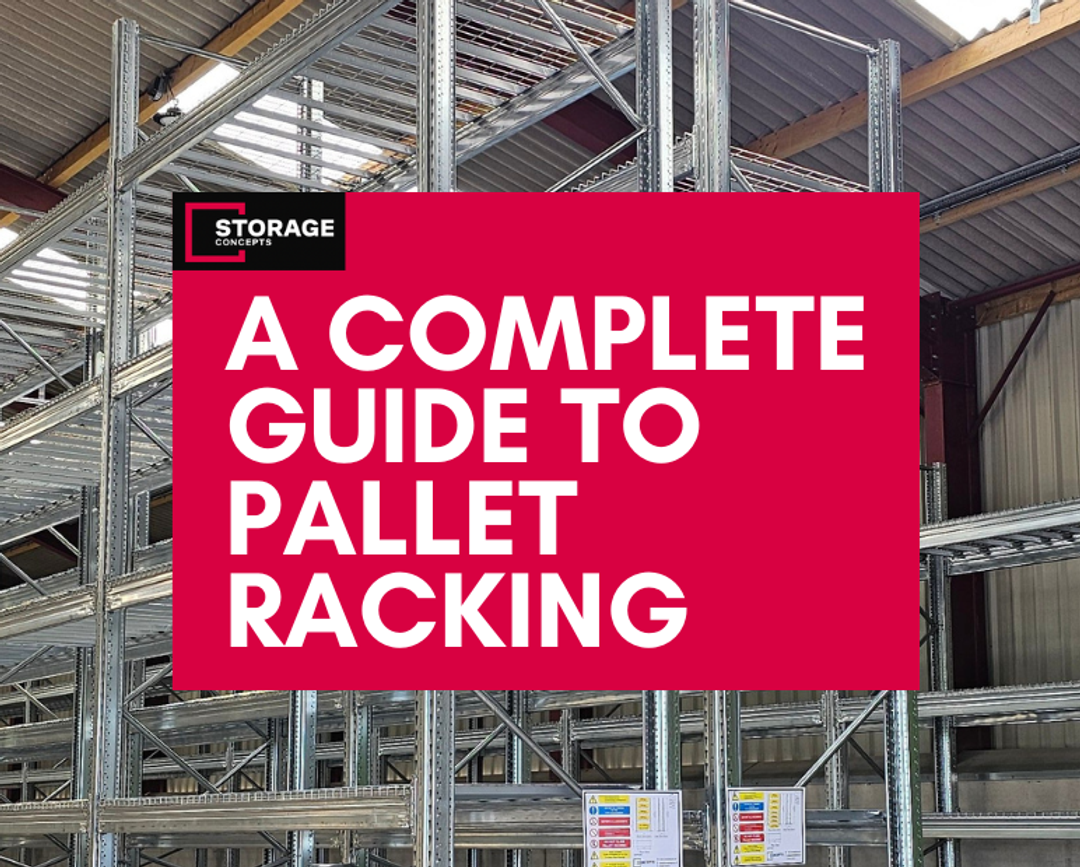
Warehouse Racking Building Regulations Guide
Why Warehouse Regulations Matter
When it comes to running a safe and efficient warehouse in the UK, racking is one of the most important systems to manage properly. Whether you're overseeing a small stockroom or a large distribution centre, following warehouse racking regulations is essential for keeping things running smoothly. Here's why:
- Preventing Accidents & Workplace Safety: Well-maintained racking helps prevent accidents like collapses or falling items, keeping your team safe.
- Legal Compliance: HSE guidelines and building regulations require safe racking. Regular checks help you avoid fines, shutdowns, and legal issues. At Storage Concepts we provide pallet racking inspections and repairs.
- Protecting Your Goods: Damaged stock can disrupt operations and reduce stock turn over. Proper racking keeps your products secure.
- Insurance: If racking isn’t up to standard, your insurance might not cover damage or injury. Compliance keeps your coverage valid.
Key UK Regulations for Warehouse Racking
Here are the key regulations and standards to be aware of:
SEMA Guidelines
The Storage Equipment Manufacturers’ Association (SEMA) sets widely recognised best practices for:
- Design – Ensuring racking systems are suitable for their intended use
- Load limits – Clearly displaying and never exceeding safe capacities
- Installation standards – Following proper procedures to ensure structural integrity
HSE (Health & Safety Executive) Guidance
The HSE enforces health and safety laws across UK workplaces. Relevant regulations include:
- PUWER (Provision and Use of Work Equipment Regulations) – Requires racking to be safe and properly maintained
- LOLER (Lifting Operations and Lifting Equipment Regulations) – Applies if lifting equipment is used to load/unload racking
- Risk assessments – Must be carried out regularly to identify and mitigate hazards
Building Regulations & Planning Permission
Racking may be subject to building regulations, especially if it affects:
- The structure of the building
- Fire safety systems
- Emergency exitsPlanning permission may also be required for large installations, particularly in new builds or significant refurbishments.
BS EN 15635 Standard
This European standard outlines the proper inspection and maintenance of storage systems, including:
- Routine visual checks by warehouse staff
- Formal inspections by a trained person (often annually)
- Clear protocols for damage reporting and repair
Load Capacity & Signage Requirements
Understanding and clearly communicating racking load limits is crucial for warehouse safety. Here’s what you need to know:
- How to Determine Load Capacity
Load capacity depends on the racking design, materials, beam spacing, and how loads are distributed. Always refer to manufacturer specifications or consult a SEMA-approved racking supplier or inspector to calculate safe limits.
- Importance of Racking Load SignsLoad signs must be clearly displayed on each racking system, showing:
- Load signs must be clearly displayed on each racking system, showing:
- Maximum bay load
- Maximum shelf load
- Manufacturer or installer details
- Risks of Exceeding LimitsOverloading racking can lead to:
- Structural failure or collapse
- Injuries or fatalities
- Damage to stock and equipment
- Voided insurance coverage
Installation & Maintenance Rules
Proper Installation by Trained Professionals: Racking should always be installed by qualified experts who follow manufacturer guidelines and industry best practices to ensure structural integrity.
Anchoring and Stability Requirements: Racking must be securely anchored to the floor or building structure to prevent tipping or collapse, especially under heavy loads or impact.
Routine Maintenance Checks: Regular inspections are essential to spot damage, wear, or loose components early. Schedule visual checks by staff and formal inspections by trained personnel.
Staff Training Obligations: All warehouse staff should be trained on safe loading practices, how to identify racking damage, and reporting procedures to maintain a safe working environment.
Warehouse racking Inspections
Regular inspections are vital to keep your warehouse racking safe and compliant. Here’s what you need to know:
How Often Should You Inspect Your Racking?
Visual checks should be carried out frequently by warehouse staff, weekly or monthly. Formal inspections by a competent person are usually recommended annually or after any incident or modification.
Competent Person vs. External Inspector
- Competent Person: Often a trained member of your own staff responsible for routine checks and reporting obvious damage.
- External Inspector: An independent expert, usually brought in for formal inspections and certifications.
Benefits of Using a SARI: Certified by the Storage Equipment Manufacturers’ Association, SARIs provide expert, unbiased inspections ensuring your racking meets industry standards. They can identify risks and advise on repairs or upgrades.
Common Inspection Checklists Include:
- Checking for structural damage or corrosion
- Verifying load signage and labels
- Ensuring anchoring and stability
- Assessing beam locks and safety clips
- Reviewing maintenance and damage reports
Common Compliance Mistakes to Avoid
Keeping your warehouse racking safe and compliant means steering clear of some common pitfalls:
- Overloading Shelves: Ignoring load limits can cause racking failure and serious accidents.
- Skipping Inspections: Regular checks catch issues early—don’t let them slip through the cracks.
- Using Damaged Racking: Damaged beams, uprights, or connectors weaken the system and increase risk.
- Not Updating Layout Plans After Changes: Any modifications to racking should be documented and reflected in your warehouse plans to ensure ongoing safety and compliance.
How to Stay Compliant
Staying on top of warehouse racking regulations doesn’t have to be complicated. Here are four key steps:
- Staff Training: Make sure everyone knows safe loading practices, how to spot damage, and reporting procedures.
- Scheduled Inspections: Set up regular visual checks and formal inspections to catch problems before they escalate.
- Keeping Records: Document inspections, repairs, and any changes to your racking layout to stay organised and compliant.
- Partnering with a Racking Specialist: Work with certified experts who can advise on installation, maintenance, and compliance to keep your warehouse safe and efficient.
Working with Storage Concepts
At Storage Concepts, we’re committed to helping you stay compliant and safe with warehouse racking solutions tailored to your needs. From expert design and professional installation to ongoing maintenance services, we ensure your racking meets all current regulations and industry best practices.
Whether you’re upgrading existing systems or starting from scratch, our team works closely with you to deliver safe, efficient, and fully compliant storage setups.
Are you ready to make your warehouse safer and more efficient? Contact us today for bespoke warehouse racking solutions designed with compliance in mind.
Arrange a consultation
Contact us today to arrange a free, no obligation consultation.
Book a consultation


